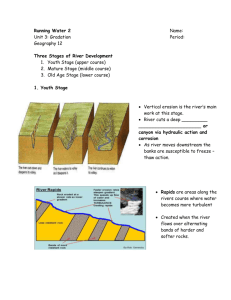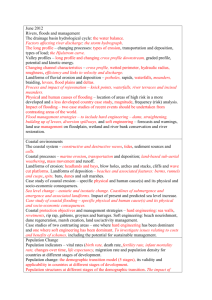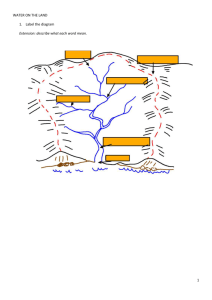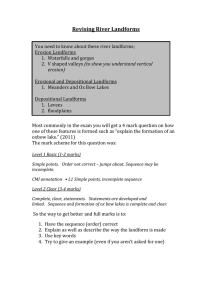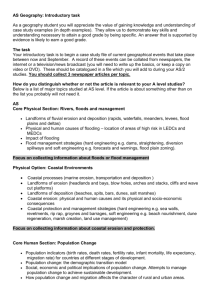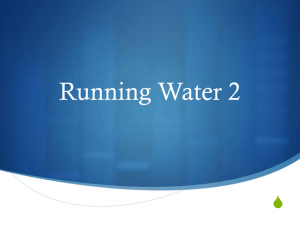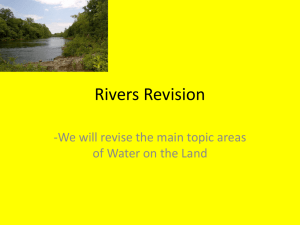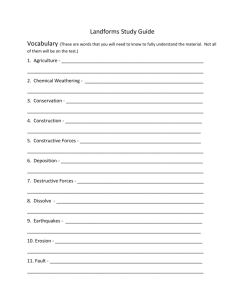Rivers-Revision-activities
advertisement
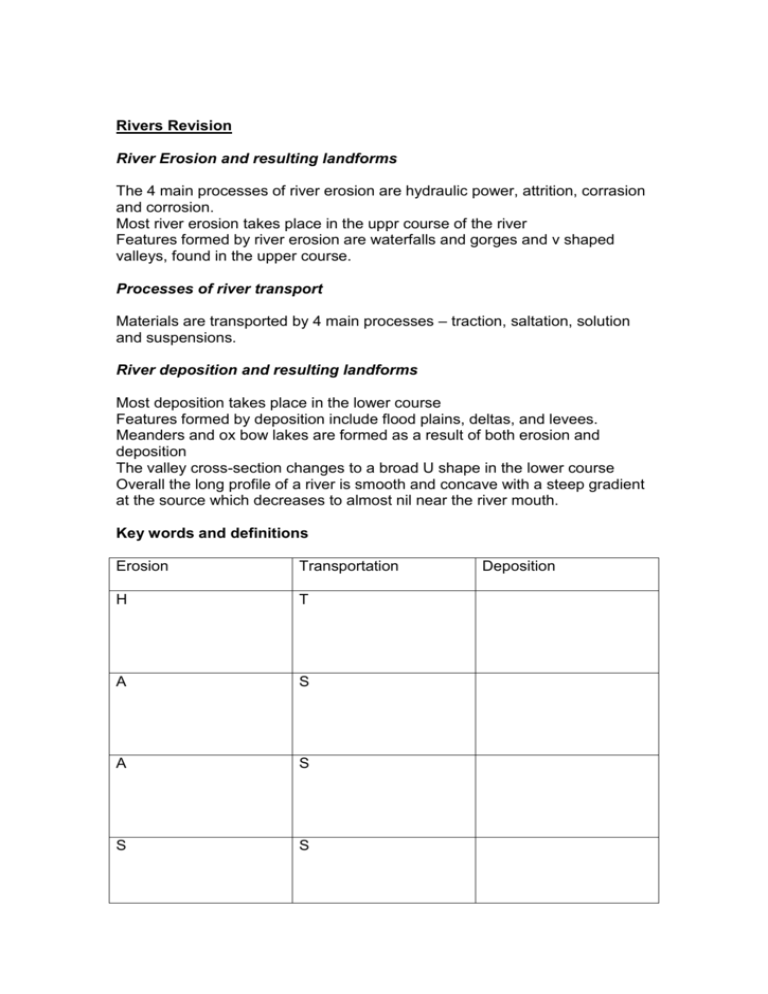
Rivers Revision River Erosion and resulting landforms The 4 main processes of river erosion are hydraulic power, attrition, corrasion and corrosion. Most river erosion takes place in the uppr course of the river Features formed by river erosion are waterfalls and gorges and v shaped valleys, found in the upper course. Processes of river transport Materials are transported by 4 main processes – traction, saltation, solution and suspensions. River deposition and resulting landforms Most deposition takes place in the lower course Features formed by deposition include flood plains, deltas, and levees. Meanders and ox bow lakes are formed as a result of both erosion and deposition The valley cross-section changes to a broad U shape in the lower course Overall the long profile of a river is smooth and concave with a steep gradient at the source which decreases to almost nil near the river mouth. Key words and definitions Erosion Transportation H T A S A S S S Deposition Landforms Erosion Deposition Erosion and Deposition River Basins Rivers begin in upland areas and flow downhill, becoming wider and deeper until they enter the sea. It is subdivided into 3 sections The upper course The middle course The lower course D E B C A F A= B= C= D= E= F= Tributary Confluence Mouth Watershed Source Drainage basin …………………: where two rivers meet …………………: the area drained by a river and its tributaries …………………: where a river flows into the sea …………………: where the river begins …………………: a smaller river which flows into a larger river …………………: the imaginary line surrounding a drainage basin The upper course of a river Waterfalls Write a paragraph to explain how waterfalls are formed……….. The middle course of a river As the river flows downstream the gradient becomes less steep. Sideways erosion becomes more important than vertical erosion and the river starts to meander. Some of the rivers energy is also used to transport material downstream. = = = = Meanders Write a paragraph to explain how meanders are formed…………. The lower course of a river As the river gets nearer the sea deposition becomes the most important process, encouraged by: A large load carried by the river Any obstruction e.g. lake Any fall in the volume or loss in the velocity Features of the channel in lower course Wide Deep Lined with sand and mud Islands of silt Carries large load of alluvium Feature of the valley in the lower course Wide flat flood plain Levees found on river banks Ox bow lakes and meander scars A line of river cliffs found at the edge of flood plain. Make sure you can label the features highlighted in black onto the flood plain diagram. Ox- Bow Lakes Using the above boxes use and label diagrams to show the formation of an ox-bow lake. Use the boxes to give a brief explanation. Write a few sentences to explain how flood plains are formed….. Levees. Explain the formation of a Levee…………………….. Describe the physical features of a Delta……………………………….. Flooding Flooding is a normal occurrence in the lower course of a river. It occurs when the river overflows its banks and leaves the channel. River flooding helps to form several river features: Flood plains, ox-bow lakes and levees. Causes of flooding: Natural: Long continuous rainfall Cloud-burst in thunderstorm Rapid melting snow and ice Human: Expanding urban areas Deforestation Occasional disasters e.g dam burst Name your case study!!!

